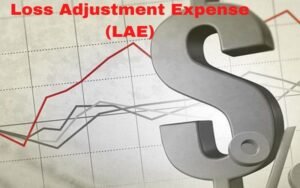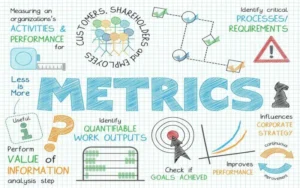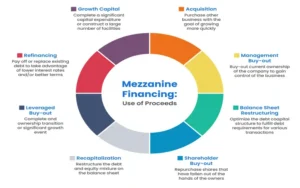What does margin analysis mean?
A critical idea in business is margin analysis, which determines how profitable a product, service, or business is. The gap between the sales price and the cost of goods sold (COGS) must be studied. The “margin” is this difference, shown as a number.
When you do a margin study, you can use three different metrics:
The gross margin
Net income
Margin of operation
But there’s more to it than just adding up these numbers. You also need to know what makes these margins work, how to improve them, and how changes in prices or costs affect your total profit. This could mean looking at how changes in volume affect margins, how different pricing methods affect margins, or how your business’s costs are structured.
When it comes to price, product mix, cost control, and strategic planning, good margin analysis helps you make better choices. It’s an essential tool for business planning and financial analysis.
Like words
- Analysis of the Gross Profit
- A look at the net profit
- Analysis of the profit margin
Different Ways to Look at Margin
The difference between how much money you make from sales and how much it costs to sell your goods is your profit margin. It is shown as a percentage of sales. It tells you how much money your business makes after cutting out its goods and services costs.
This number shows how much money is left over from sales after the cost of goods sold (COGS) is considered. The gross margin shows how much of every dollar sales the business keeps as gross profit.
The following method can be used to find your gross margin:
The gross margin is ((Revenue – COGS) / Revenue) × 100.
A gross margin analysis can help you determine which of your goods, services, or markets make you the most money. It can also help you determine how well your production and sourcing methods work and find ways to save money. It can be used for pretty much anything that adds to the cost of production.
A Look at the Operating Margin
When you add up all of your running costs, your operating margin shows how much of each dollar of sales you still have left over. This covers promotion, research and development, and general office costs.
This measures how well a business can make money from its primary activities. The answer is found by dividing running income by net sales:
You get the operating margin when you divide operating income by net sales.
Take your gross profit and subtract your running costs, such as rent, salaries, and utilities. This will give you your operating income, also called operating profit or Earnings Before Interest and Taxes (EBIT).
An operating margin study shows your company’s finances’ stability and health. It tells you how much money you make from your main business activities, essential for long-term success.
Examining the net margin
Net margin analysis tells you how profitable a business is as a whole. It figures out how much net profit your business makes as a share of its sales. It gives you a complete picture of your financial health by considering all your costs, not just the cost of goods sold or running costs.
Here is the method for finding the net margin:
When you divide net income by revenue, you get 100.
To find your net income, take your gross profit and take away all of your costs, such as taxes and interest. A company’s total production efficiency, pricing strategy effectiveness, and cost-controlling skills can be seen through net margin analysis. Because it considers everything that impacts profits, it is the most important financial tool for making long-term plans and choices.
Why is margin analysis essential?
Find products and services that will make you money.
Each product’s margin study can help you determine which goods or services make the most money for your business. You can use this knowledge to make intelligent pricing, product mixes, and marketing choices.
Say you have three main items: A, B, and C. Because you did a margin study, you know that product A has the highest gross margin and product C has the lowest. This could mean you need to change the price or cost of making product C to make it more profitable. You could also put more effort into marketing and selling product A as your primary source of income.
Plan and make decisions.
Margin analysis is essential for pricing strategies, cost control, and general financial planning because it helps businesses determine how different costs affect their profitability.
You can use it to make intelligent choices about:
The best price to sell each item or service for
Where or what market to focus on? What goods or services do you buy to grow in the future?
How much should you spend on ads and marketing?
How to make your production and sourcing methods more efficient to save money.
Margin analysis is especially important for deciding how much to charge for things. By knowing your margins and comparing them to how sensitive your customers are to price, you can find the best price for your goods or services that will make you the most money, keep you competitive in the market, and show what you’re offering as a value.
Find approaches to lowering costs.
Margin analysis can help you find ways to run your business more efficiently and save money. You can find places where costs are too high and take steps to lower them by looking at each part of your margins.
Such things could be:
- Talking to sellers about better deals
- Making your production methods work better
- Finding ways to do more efficient things
- Getting rid of running costs
No matter what, the first thing that needs to be done to cut costs is to determine which products and methods to focus on. With gross margin analysis, you can find out which goods or services have the most significant production costs, why, and if it’s worth lowering them.
Better Allocation of Resources
Margin analysis can help you cut costs and make the best use of your resources to make the most money. You can put your resources where they will make the most difference if you know which goods and services bring in the most money for your business.
For instance, let’s say you don’t have much money and must choose whether to spend it on selling products A or B. After looking at their margins, you see that product A has a more considerable net margin, making you more money.
Profitability per unit doesn’t always mean more money in the bank, so the next thing you should do is look at how many of each product you sell. Even if product B has a smaller net margin but more sales, you might still want to market it because it could bring in more money overall. Or, you may see that product A has a higher profit and less demand, which is a chance to boost sales.
How to Do an Analysis of Profit Margin
1. Figure out your net, operating, and gross profit ratios.
Find your gross, operating, and net margins using the methods we discussed earlier. You might choose one over the other two, depending on what you want to test.
If you want to know how much money you make from just your goods or services, use gross margin analysis. This measure includes anything related to the costs of making something, like labor and raw materials or your cost structure.
It would be best to use operating margin analysis to look at all the costs of running your business, like rent, marketing, and pay. This gives you a fuller picture of the efficiency of your processes.
When you want to know how much money you have left over after paying all your bills, like taxes and interest, use net margin analysis.
2. Compare with benchmarks in the same business and data from the past.
You can’t just look at your profit ratios and say whether they’re “good” or “bad.” You can get an idea of the averages in your business from the financial statements of your competitors or websites like Yahoo Finance.
You should also look at old data and compare it to your present margins. Check out how your margins have changed over time to see if there are any themes or trends. That way, you’ll know if your current margins are good enough and be able to make changes from one year to the next.
3. Look into the primary factors that affect each margin.
As we already said, it’s essential to know why your margins are the way they are so you can make intelligent business choices. There are a few ways to give your margin analysis more background:
Find your contribution margin. This number tells you how much each product or service helps you cover your set costs and make money. That way, you’ll know which unit makes you the most money.
Cost behavior and break-even spots should be looked at. When you launch products and start other vital projects, you can be affected by when you know you’ll start making money from your investments.
Use KPIs, SWOT analysis, and Porter’s Five Forces to see how your business is doing.
Also, you may know about some problems with your work. Clues about what’s wrong may have already been given by customers, employees, or an apparent problem with service. These trouble spots should show up in your margin analysis, which will let you get to the bottom of the problem.
4. Use tools for showing facts.
There will probably be a lot of data to look at and keep track of while you do margin analysis. It is easier to understand and spot trends and patterns when you use data presentation tools like charts, graphs, and financial modeling software.
Plus, it works with your existing software, so your information will be more accurate and up-to-date by default. You can also do quick tests and scenarios with if-then statements and other tools. When you change one number, you can see how it affects your margins.
5. Always look over your margins and make changes as needed.
Because the market constantly changes, you must monitor and review your margins to ensure they’re correct. This means looking at them at least every three months.
It’s also important to note that the things that affect your earnings might change over time. For instance, a supplier could quickly raise prices, changing your cost structure and, in the end, your profit margins.
Essential things to think about when doing a SaaS margin analysis when figuring out how much a SaaS company is worth
One of the best ways for businesses to grow is for their revenue to be predictable. This makes it easier for them to plan for growth. In other words, their profits are also a key sign of their financial health and an essential part of how much the company is worth.
In this analysis, PE investors, financial buyers, and business stakeholders often look at gross profit margin, growth rate, net revenue retention, and customer acquisition costs.
A good average for a SaaS gross profit margin is 75% or more.
If a business wants revenue-based financing, it’ll look at its income to determine its fair market value. If your earnings are higher, you can probably get better terms on your loan.
An excellent way to figure out how profit margin and growth rate are related is to use the Rule of 40. The Rule says these two numbers should add up to at least 40% for a healthy SaaS business.
The amount of net income retained gives profit margins more meaning. If your NRR is higher than 100%, your current customers are spending more and more, which is more than the money you lose when they leave. This is a good sign that your margins can support your growth.
When figuring out how much a SaaS business is worth, you should also look at its EBITDA (earnings before interest, tax, depreciation, and amortization) and seller’s discretionary earnings (EBIT profit minus owner’s salary, perks, and other costs).
As a SaaS business, your ability to get a reasonable valuation multiple often depends on how profitable you are across these different margin metrics and rules. This means that SaaS margin analysis is more in-depth than many others. This is mainly because predictable income makes evaluations more certain.
It helps figure out prices and whether a product will sell.
It is much harder for SaaS companies to determine how to keep their costs down than other businesses. It can be hard to figure out your margins quickly when you add costs like hosting fees, help and maintenance, and development.
In almost all SaaS products, you can pay a flat rate, a tiered rate, based on usage, or per seat. Each has its profit margin issues. For example, adding people puts more stress on the server, and the prices for yearly and monthly plans are also different.
One of the best ways to price SaaS goods is based on their value. It’s more challenging if you don’t know your margins or how to set them. But you’ll also need to consider cost-plus pricing as you study.
Important for lowering costs and running costs
Margin analysis looks at more than just the top line of income. It also helps you focus on cutting fixed and variable costs, making the best use of your resources, and making smart business choices that will affect your profit margin.
It’s possible to get a more detailed picture of your margins by comparing items from different financial statements through ratio analysis. This is in addition to reviewing each line item in your income statement. This shows the difference in percentages between a cost group and its revenue.
You can also do an operating cost analysis to determine how much you spend on marketing, R&D, sales, and other things that impact your margins.
Problems with Figuring Out How Much SaaS Costs
At first glance, SaaS businesses have simple costs: making new products, keeping software up-to-date, keeping data safe, and getting new customers. But it can be hard to get more specific about these cost buckets.
Most SaaS products have price models that include multiple services (and levels of services), which makes it hard to figure out margins. They also use a lot of different ways to sell their products, a lot of different software programs, and a lot of different kinds of expensive infrastructure (like security, compliance, and user rights) that isn’t always part of the cost of goods sold (COGS).
You also need to know a lot about unit economics.
How much does it take to serve one person?
How much does a person cost you over their whole life?
After that, you can use what customers are ready to pay and your target margins to determine the best price. Often, this is a process of trial and error that needs to be tweaked over time and could lead to changes in price and packaging.














































